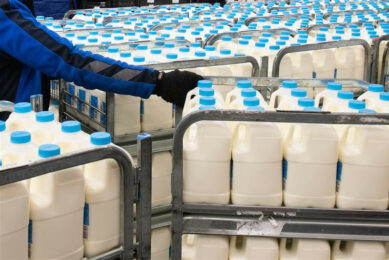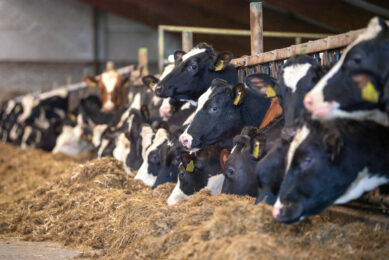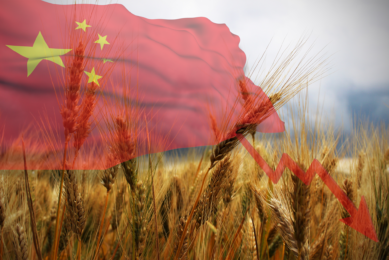Understanding the world of dairy
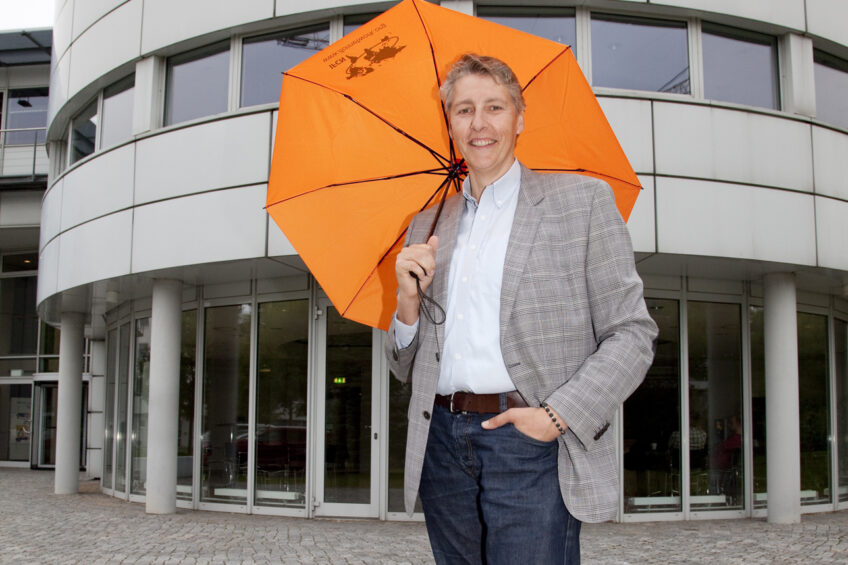
It’s complex and changing fast. Understanding the world of dairy farming and dairy sector economics needs knowledge from many different angles and sources. Torsten Hemme, managing director of the International Farm Comparison Network, acts as the spider in the web, gathering intel, knowledge and data for a better understanding and inspiration for all involved in the dairy sector.
IFCN is a network of dairy researchers from over 100 countries with the aim to create a better understanding of the dairy world. Besides this, over 100 dairy related companies are members. The main research focus lies in dairy farming and dairy sector economics. By combining the micro picture of farm economics with the macro picture of the dairy sector developments, a holistic understanding is created. This knowledge can help all actors in the dairy chain to better understand the current situation and also to plan the future.
Why is a network like IFCN useful for the dairy chain?
“Let’s start with the picture of the dairy world today – in which so many people are involved. We have over seven billion consumers and approximately one billion people living on dairy farms and generating their livelihood by milking dairy animals. The key challenges for the dairy stakeholders lie in its complexity and the high rate of change in a globalised world. We believe that by addressing challenges in the dairy world we can contribute to a more resilient and more sustainable future for all of us.”
How did IFCN evolve from ‘scratch’ to a world-wide platform for dairy economics?
“There have been three steps which I like to explain. First there is the origin of the research question: Growing up on a dairy farm in northern Germany and working on dairy farms while studying I got first-hand experience of the various dairy systems which exist on different continents and the challenge of trying to understand the different systems which were not easy to compare. So the research question was born: How to create a better understanding of milk production world-wide?
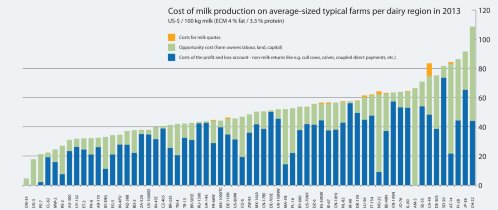 Farm codes: eg CM-35 = CM = Cameroon and 35 = 35 dairy cows per farm. Letter(s) after the number indicate(s) the region within the country eg IN5PU = India, 5 cow farms in Punjab.- Click here to view larger image
Farm codes: eg CM-35 = CM = Cameroon and 35 = 35 dairy cows per farm. Letter(s) after the number indicate(s) the region within the country eg IN5PU = India, 5 cow farms in Punjab.- Click here to view larger image Second is the creation scientific base 1994 – 1999: During a PhD at the Thünen Institute, Germany and also involving Texas A&M University I have developed the model TIPI-CAL which is now a standard for dairy farm economics. It allows the analysis and comparison of every dairy farming system in the world. Moreover, the idea of a network of researchers was born to have an ongoing benchmarking of dairy farms. In the PhD thesis, we had for the first time an analysis of milk production costs from 17 countries based on 35 typical farm types. A large number of people like Folkhard Isermeyer, Claus Deblitz (Thünen Institute), Ron Knutson/James Richardson/Joe Outlaw (Texas A&M University) and over 30 Master and PhD students have made substantial contributions to the ‘IFCN idea’.
Third, the development of a sustainable business model: To make the IFCN an ongoing network, a business model and an organisational setup was needed. This was challenging as public resources where no longer available for the research project. So we created a win–win concept first for the participating researchers and later for the agribusiness companies. For me it was a very interesting experience as a researcher to create an institute to do the research that I felt is needed to be done.”
You have refined your mission which basically defines what you like to do in the dairy sector – can you explain in what direction IFCN is moving now?
“After 15 years we have refined our mission to: We create a better understanding of the dairy world by providing comparable data, knowledge and inspiration. The key difference is that we have widened our research focus from economics of milk production towards the economics in the dairy world. Moreover, we have explained in the mission what we offer. This means now we provide globally comparable dairy data, outstanding knowledge and inspiration to widen your imagination.”
Each organisation has driving principals or values. Which are the ones of IFCN?
“The values are very very important for the IFCN and the work we do. Our values are: Trust – Independence – Truth. Trust is the most important principal as it is vital for an open sharing, cooperation and a network that really works. The IFCN is independent from third parties and is committed to truth, science and reliability of results. Truth means for us that we show the dairy world as it is and as accurately as we can measure it. We describe realities and without having any hidden agendas. Via this we like to be a neutral and reliable provider of information.”

Who is contributing to IFCN?
“In IFCN we have basically two networks which combine the side of researcher and the side of the dairy agribusiness. In the network of researchers, we have dairy economists from either universities or dairy organisations. These people provide information from their country and receive in return global dairy information like e.g. the annual IFCN Dairy Report back.
In the agribusiness network companies acting in the dairy chain e.g. milk processors, farm input supplier, etc., participate. These companies – we call them supporters – pay a membership fee and receive in return the IFCN report, participation in the annual supporter conference and if they like, also access to our dairy databases. Encouraging pre-competitive discussions with the whole dairy chain, the IFCN is always with its finger on the pulse of time. By combining the two networks and being a bridge between research and industry, the IFCN is an on-going knowledge creation centre.”
How is the IFCN used and by whom?
“Well, there are different clusters of people ranging from dairy economists to dairy companies and from global organisations making policy to consumers and they use the information in different ways. As we are not funded by public sources we have basically two type of information – that which is publically available and that which we charge a fee for, to finance the network. Via this we try to serve the whole dairy world and also specific needs of the people and organisations we have.”
This is interesting, but what do you offer for dairy farmers?
“For dairy farmers we have three important points of interest. First we give a voice to reach of the players in the dairy world. Second, on the IFCN website you will find the latest global milk and feed price trends and helpful IFCN publications. Third, the farm comparison work allows you to judge the competitive position of milk production in your region and if you know the cost of production of your own farm you can judge even this. This you can get from the IFCN publication done by the IFCN centre or the IFCN research partners in individual countries.”
Do you share such a publication on the cost of milk production with users?
“Of course. We create e.g. each year in October an article which summarises the results of the annual IFCN Dairy Report. In the chart (above) you find the comparison of the cost of milk production from 54 countries and 64 dairy regions we have defined. This comparison is based on the concept of typical farms and is focused of those farm types which have been defined as representing an average sized farm in the country or region.
Some selected findings of interest to individual farmers to benchmark their country or their individual farm against the average: Costs of these farm types range US$5-US$109 per 100 kg milk (ECM 4% fat, 3.3%protein). On average the costs of this farm sample is US$49 per 100 kg milk. The highest costs arose in Switzerland for a farming system with 22 cows/ farm. The lowest costs are found in extensive dairy farming systems in West Africa / Cameroon with 35 cows. In the segment of low costs we also found larger farm types (>100 cows) from Argentina, Uruguay, Australia, New Zealand and South Africa. In China, we estimate cost level of average sized farms beyond US$55 / 100 kg milk. The costs level of the USA for average size farms we estimate for 2013 in a range between US$38 – US$ 45 / 100 kg milk. In the EU in simple terms the average size farms costs level for average sized farms start at 45 US-$ / 100 kg milk. It should be mentioned that with the abolition of quotas structural change will lead very fast to larger farms and most likely lower costs. This is already indicated once we look at ‘larger’ farm types which we have analysed as well. The costs on these larger farm types can be below US$45 or €35 / 100 kg milk.”

Biography
Dr Torsten Hemme is the Managing Director of the IFCN Dairy Research Center in Kiel, Germany. He studied agricultural economics at University of Göttingen, Germany and Texas A&M University; USA. His PhD thesis set the basis for the International Farm Comparison Network (IFCN), which annually benchmarks milk production costs and summarises the findings in their Dairy Report. He has a long list of publications, presentations at international dairy conferences and experiences in various research / consulting projects.
IFCN anno 2014
In 2014 researchers from 100 countries participated in the country profile analysis of the International Farm Comparison Network. These countries represent ca. 98% of the world’s milk production. In the farm comparison 176 typical farms from 64 dairy regions in 54 countries were analysed. For the first time, Malawi, Sudan and Zimbabwe were included in this analysis. Additionally, over 100 dairy related companies became members of the network. The research work is coordinated by 15 people working at the Dairy Research Center in Kiel Germany which has a cooperation with the University Kiel.
Join 13,000+ subscribers
Subscribe to our newsletter to stay updated about all the need-to-know content in the dairy sector, two times a week.



